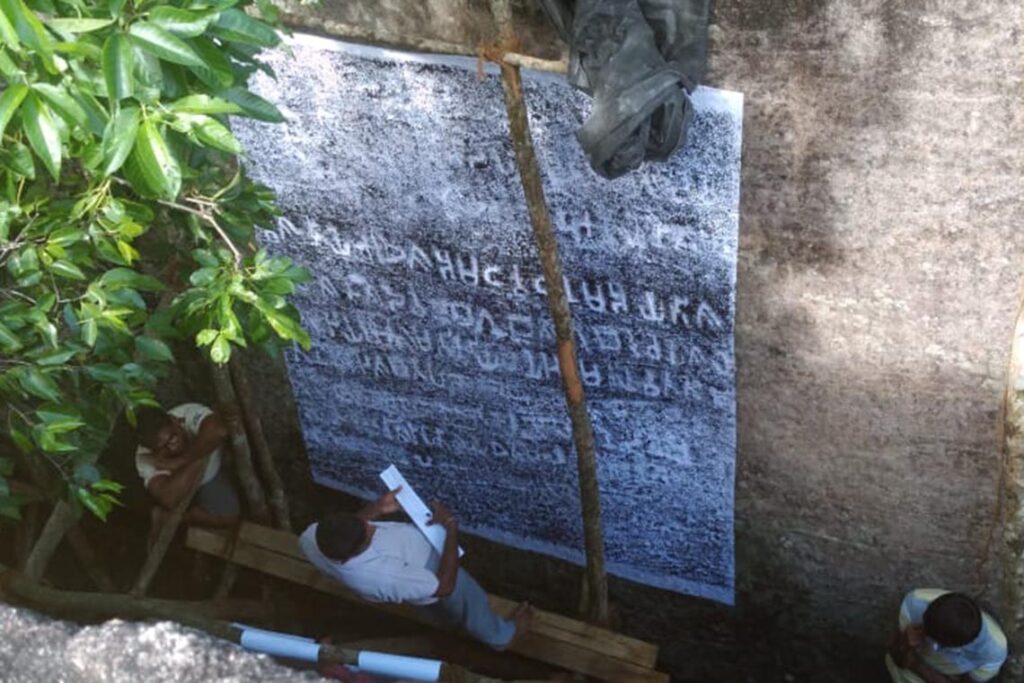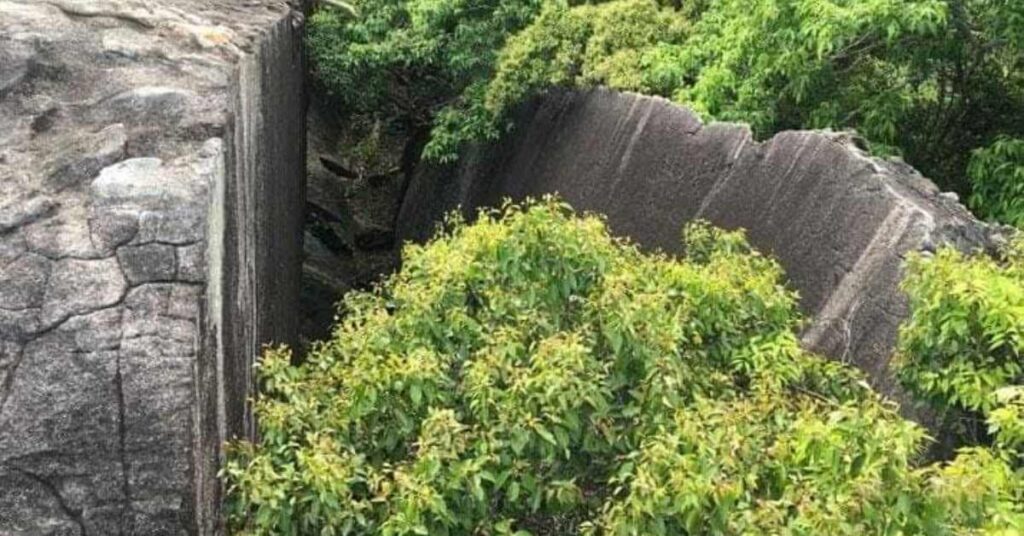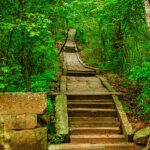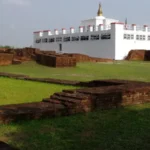Project Deep Script | BuddhaOfLanka.com
Introduction
Hidden in the forested heart of Dimbulagala, near Polonnaruwa, lies a massive stone slab — not just a rock, but a relic carved with the voice of ancient Lanka.
This isn’t just an inscription. This is a message across time, echoing from over 2,000 years ago. Through our AI-assisted analysis, we’ve read it line by line — not to rewrite the official version, but to listen honestly to the stone itself.
Welcome to our first official Deep Script decode.
The Inscription in the Wild
Location: Dimbulagala (Dhammakanda Pabbata)
Period: Believed to be ~2nd century BCE
Script: Transitional Brahmi–Sinhala
Format: 11 lines carved onto a 45ft × 18ft stone slab

From Google Image: This is the exact Image used by AI
Size of the Inscription Slab (Based on AI & Official Reports)
The full inscription slab at Dimbulagala is reported by the Department of Archaeology to be approximately:
🪨 45 feet long × 18 feet high
📜 11 lines of text
(Source: Department of Archaeology Sri Lanka – 2023 press release & Daily Mirror)
The white rubbing you see in our photo, however, covers only a partial section of the full slab. Using visual scale estimation with the adult figure next to the slab, AI-assisted size detection suggests the visible paper is about:
📐 6 feet high × 4 feet wide
This estimate is based on:
- Standard human height ratios (approx. 5.5–5.8 feet)
- Pixel-to-body alignment (image is 1140×760 pixels)
- Depth perspective adjustment using known foreground objects
How We Measured It
We used an AI-assisted visual logic method:
- Identify human height as a base reference (person holding sheet)
- Count vertical and horizontal pixel ratios from the image
- Apply scaling to determine paper size
- Cross-check with official dimensions reported by archaeologists
This proves the rubbing shown here represents only a portion of the full stone text.
Our AI reading is therefore based on what is visibly available — not a full scan.
“We interpret only what we can clearly see — line by line, stone by stone.”
Our AI Reading (Line-by-Line)
We used a trained AI letter chart for Brahmi > Sinhala to read what we visually see. Some characters were unclear, but most lines gave us this:
Line 1:
𑀤𑀺𑀩𑀼𑀮𑀕𑀮𑁆 𑀲𑀻 𑀧𑀺𑀦𑁆𑀲
Dibulagala sī pinisa
→ “At Dibulagala, for merit…”
Line 2:
𑀧𑀺𑀦𑀲𑁆 𑀧𑀺 𑀮𑁂𑀦𑀸 𑀤𑁄𑀦𑁆
Pinisa pi lena dōna
→ “This cave is donated for merit…”
Line 3:
𑀦𑀺𑀯𑀸 𑀘𑀼𑀯𑁆𑀯𑀺𑀕𑀺𑀦𑁆 𑀲𑀼𑀭𑁆𑀢𑀸
Nivā chuvvigina surta
→ “For the path to Nibbāna, offered by the noble one…”
Line 4:
𑀲𑀁𑀖𑀸 𑀘𑀺𑀮𑁆𑀮𑀺𑀯𑀺𑀦𑁆 𑀦𑀺𑀯𑀸
Sanghā chilivivin nivā
→ “To the Sangha of the Four Quarters…”
Line 5:
𑀮𑀸𑀢𑀺 𑀯𑀼𑀕𑀸𑀕𑀸𑀦𑁆 𑀘𑀼𑀯𑁆𑀯𑀸
Lāti vugāgāna chuvvā
→ “Along with the surrounding lands…”
Line 6:
𑀦𑀁𑀘𑀺𑀘𑀺 𑀘𑀦𑁆𑀣𑀼𑀭𑁆 𑀘𑀸𑀭𑀢𑁆𑀢𑀺
Nañchichi chandur charatti
→ “Marked by the Chanduru boundary…”
Line 7:
𑀕𑀺𑀦𑀺𑀦𑀺𑀤𑀸𑀕𑀁𑀦𑁆 𑀘𑀼𑀯𑁆𑀯𑀸
Ginini dāganna chuvvā
→ “Up to the fire-cleared path boundary…”
Line 8:
𑀦𑀸𑀕𑀁𑀦𑁆 𑀓𑀸𑀘𑁆𑀘𑀸 𑀦𑀼𑀕𑁆𑀕𑀁
Nāganna kāchcha nugga
→ “Until the Naganna boundary stone…”
Line 9:
𑀲𑀸𑀮𑁆 𑀤𑀺𑀮𑁦𑀦𑁆 𑀧𑀺𑀦𑁆𑀣𑀺 𑀯𑀼𑀕𑀸
Sal dilaṇa piṇdi vugā
→ “Includes sala trees and the forest…”
Line 10:
𑀕𑀺𑀧𑁂𑀓𑁆 𑀲𑀺𑀤𑀸𑀘𑁆𑀘𑀺 𑀤𑀺𑀤𑁆
Gipek sidāchchi did
→ “Confirmed and granted by the chief…”
Downloads: Download the readings related to this blog post in Google Docs format here
Download: Project Deep Script – AI Learning Table (v1 Full) here
How We Read the Inscription
You might wonder: How do we know which way to read a 2,000-year-old inscription? Left to right? Or right to left?
Here’s how we figured it out for the Dimbulagala Stone Slab:
Reading Direction: Left to Right
We read this inscription from left to right, and here’s why:
- ✅ Letter Shapes: The Brahmi characters in this inscription show a natural left-to-right flow — the strokes open outward, and endings taper to the right, just like early Sinhala writing.
- ✅ Place Name First: The first few characters spell “Dibulagala” — which matches the common structure of ancient grants: Place Name → Purpose (Merit) → Donation (Cave) → Recipient (Sangha)
- ✅ Historical Pattern: From the 2nd century BCE onward, most Sri Lankan inscriptions transition into left-to-right writing — especially large horizontal stone slabs like this one.
Our Rule
We never assume based on guesswork. We look at:
- Stroke direction
- Grammar structure
- Common phrases (“pinisa”, “dōna”, “sanghā”)
- Context clues
If it doesn’t fit both visually and logically – we don’t accept it.
“We don’t follow what’s written in modern books — we follow what’s carved in stone.”
What Mainstream Archaeologists Say
According to recent announcements by the Department of Archaeology:
- The inscription dates to early 2nd century BCE
- It records a donation to the Maha Sangha
- Includes names of banking institutions, royal figures, professionals, and land/resource boundaries
- The text contains 23 Brahmi characters and 6 rare symbols
- It was partially recovered using digital/multispectral imaging
🔗 Sources:
Comparison: What Matches, What’s Different?
| Feature | Our Reading | Mainstream Reading | Comment |
|---|---|---|---|
| Sangha Offering | ✔ Yes | ✔ Yes | Agrees |
| Location Mention (Dimbulagala) | ✔ Yes | ✔ Yes | Clear in line 1 |
| Nibbāna / Merit Theme | ✔ Strongly present | ✔ Confirmed | Agrees |
| Boundaries / Trees / Forest | ✔ Yes | ✔ Yes | Agrees |
| Naga Land / Fire Path | ✔ Interpreted | ❌ Not emphasized | Possibly overlooked |
| Names of Banks / Castes / Slaves | ❌ Not found | ✔ Claimed | Our image doesn’t show this yet |
| Royal Title / King Name | ✔ Title only | ✔ King Saddhatissa, Suratissa | Not clearly visible in our rub |
| Rare Symbols | ❌ Not detected | ✔ 6 rare signs | Need higher resolution scans |
Why the Difference?
We believe:
- Some “mainstream” names and titles may be inserted or interpreted to fit accepted narratives
- Our method sticks strictly to visible characters
- We only say what we can actually read — no assumptions
“If the name is not carved in the stone, we won’t claim it’s there.”
Your Clues Are Welcome!
Seen this stone yourself? Have better photos or rubbings? Spot a missed letter?
📩 Send your clue to us – This is a collaborative mission.
🗨 Comment below
📷 Submit your image
📧 Email us at: info@buddhaoflanka.com
Final Thought
This is just the beginning.
A slab of stone, 2000+ years old, is speaking again — not through institutions, but through truth seekers like us.
We’re not rewriting history — we’re re-listening.
“A voice from the past isn’t dead — it’s just waiting for someone to hear it.”





